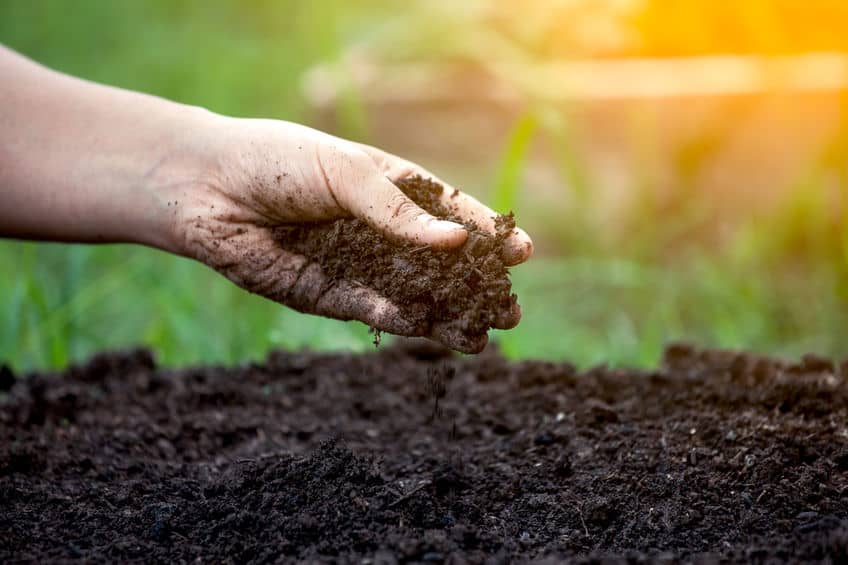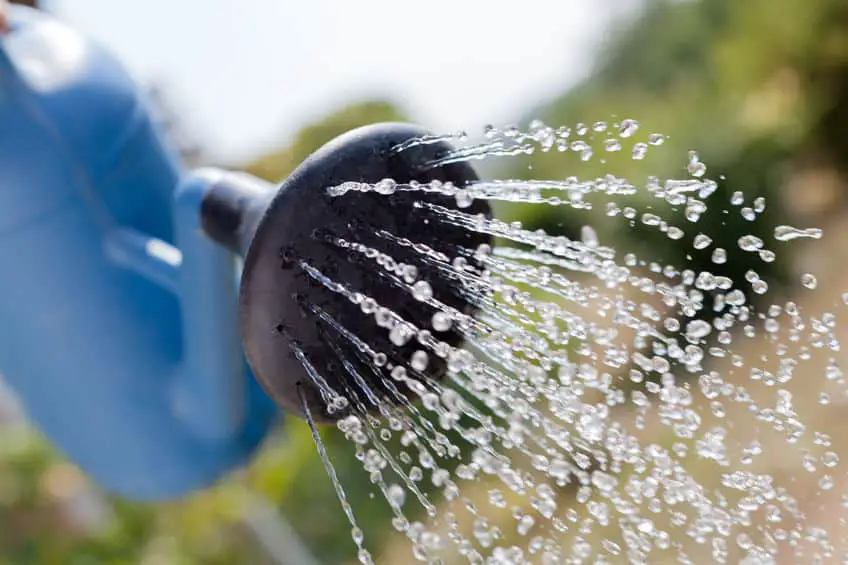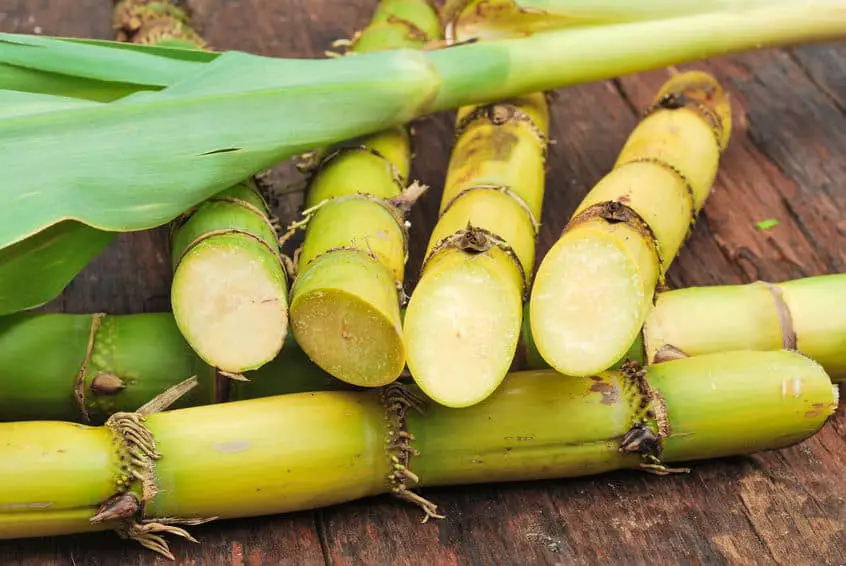This tasty, edible plant is surprisingly easy to grow, both indoors and out.
In fact, it’s actually grown as a crop in a number of countries, even in the United States. As long as you live in an area that has a warm, humid climate, then you can actually grow the plants outdoors, in your garden.
Certain places in states like Texas, Florida, Louisiana, California, and Hawaii are ideal for this.
If you want to know if this plant can thrive where you live, check out the hardiness map for your area. Hardiness maps will tell you what kind of climate you live in, and what plants grow best in that specific climate.
Sugar cane has a hardiness of 8b, so anywhere that falls in or near the 8b zone, is perfect for growing this crop. You can also go into a warmer zone, if necessary.
If you live in a colder climate, you don’t want to grow the plant outdoors, in the soil. Instead, grow the plant in containers.
This will allow you to pull the plant indoors, preferably before the first frost. (The First frost usually occurs anywhere between late September to late October, depending on where you live.)
By keeping the plant inside for the winter, you’re preventing it from dying in the harsh cold. Then, when the weather warms up, simply place it outside!
You can also try to grow them indoors all year round.
The only issue with this is that the plant may not be as warm as it likes. Try to keep it near a window, and keep it away from any air conditioning vents.
Where to Get a Sugar Cane Plant?
Ideally, you’ll want to begin planting your crop in early spring, around April or March, depending on your area. As soon as the last frost of the season occurs, you should be good.
You can start your sugar cane crop by purchasing harvested canes at the grocery store. Get canes that look as fresh as possible, since older ones will have a hard time growing.
Place these cane cuttings in water, and wait for them to sprout. (You’ll see white roots growing out of the joints in the cane.) You should also see bumps, called eyes, start to show at the joints near the top.
When growing cuttings in water, don’t keep them in there for too long. As soon as the cane starts to have bumps, it’s time to plant. Keeping the cuttings in the water for too long will result in fungus growth, which can prevent your cutting from sprouting new canes.
Once the first roots that sprouted are about ½ an inch to an inch long, take the cutting out and plant it horizontally. Yes, horizontally. The cane should not be seen beneath the soil.
You’ll want to bury the cuttings about 5 inches deep into the soil. Keep it level by digging up a trench, and placing the cuttings inside. Don’t pack the soil down on top once the cutting has been planted. Just cover it until the top of the soil is level.
If you’ve done everything correctly, you should start to see small canes popping out the soil within about two weeks. The plant grows fairly quickly, so you’ll see nice tall stalks in a short time.
Keep these cuttings for one to two years. At that point, remove them, and replant new cuttings in their place. Older crops don’t produce as nice sweetness, so it’s good to rotate them out.
The Different Types of Sugar Cane
For the most part, the cuttings that you find at the grocery store are going to be varieties of the same species.
The main one you’re going to find is the green sugar cane that most people are familiar with, although there are purple varieties as well.
The Best Container for Sugar Cane
Containers are best for indoor plants, but you can use them for outdoor plants as well. Cane does well regardless of pot material, so make your decision according to where it will be placed. Indoors, you can use materials that are more decorative than they are functional. Outdoors, choose durable plastics.
Since you’ll be planting the cutting horizontally, and multiple canes will grow from one cutting, you also want to choose a container that’s wider than it is deep.
Square or rectangular containers are best for this since they tend to be wider and have a lot of room towards the top. You can also use shallower round pots. Again, just make sure that they are wide enough in shape to accommodate cuttings and crops.
Additionally, you’ll want to make sure that the container has some type of drainage. Sugar cane likes moist soil, but if the soil is too wet, the roots will rot out. Avoid this by making sure your pot will easily allow excess water to pass through.
The Best Soil for Sugar Cane

Sugar cane grows fine in regular potting soil. You don’t need to take any extra precautions.
If you plan on planting your cane in the ground, check the topsoil in your area.
If you have a lot of clay and not much topsoil, you may want to consider growing the canes in a raised bed.
This will allow you to have several additional inches of topsoil for the plants to grow in.
How to Water Sugar Cane

Since it’s a tropical plant, sugar cane likes moist soil and a humid environment. If your plants are outside, water them as soon as the top inch or so of soil is dry.
If your plant is indoors in a container, follow the same guidelines. You’ll also want to monitor the humidity.
If the air in your home is particularly dry, you can help the plant by spraying it with a fine misting bottle a couple of times throughout the day. You can also purchase a humidifier and keep it running nearby.
If your cane is not receiving enough water, it can start to shrink up and turn brown at the edges. Too much water, and it will become soft and plump.
Watch for these signs and adjust your watering accordingly.
How to Fertilize Sugar Cane
You’ll want to fertilize your plants every few weeks throughout the growing season.
For most plants, the typical growing season in the warmer months in spring and summer. As soon as it gets cold, the plants will shut down in preparation for winter. In this state, they don’t need any fertilizer, since they’re not trying to get bigger.
For this particular plant, you’ll want a fertilizer that’s high in nitrogen. How to apply it and how often to apply it depends on what type you use. A solid fertilizer is easier since you just sprinkle it on the soil.
However, some people prefer liquid fertilizer because it’s a bit more exact.
Whichever type you decide to use, keep in mind that the overfertilization of your plant isn’t going to give you a better yield. Plants, like people, will get sick if they have too much of any nutrient.
Sugar Cane Pests and How to Get Rid of Them
When growing plants indoors, you may encounter the usual houseplant pests, such as mites, fungus gnats, and powdery mildew.
With pests directly on the plant, spray them with insecticidal soap, or use a bit of rubbing alcohol on the affected areas. For fungus gnats, hang some flypaper nearby.
Outdoors, you’ll face a lot more problems. Check on the plant regularly and physically remove any obvious pests. Weeding the ground around the plant will help eliminate any areas where pests can hide.
Keep an eye on the plant and watch for any signs of bugs boring within the stalks, rotting, discoloring, or any other indications that a pest or pathogen has moved in.
For fungus and diseases, you’ll want to search up the appropriate treatment, which is usually a chemical or antifungal. Apply these with caution, and don’t use them unless you’re certain that your crop has been affected.
You can also use chemicals to help deter pests, although make sure you’re using a lot of caution for these as well. Follow the directions closely to avoid danger to yourself.
For a chemical-free option, consider natural pest deterrents. One easy example to keep marigolds planted nearby. Spiders, hornworms, and other pests don’t like the strong smell of these plants, so they’re a great way to keep out pests naturally.
They also happen to look very pretty!
How to Harvest Sugar Cane

Wait to harvest your cane until the end of the growing season, just before the first frost.
In order to cut down your cane, you’ll want to use a large knife, like a machete. Pruning scissors or clippers aren’t really sharp enough, so even if you actually manage to cut the plant, the cut won’t be clean.
To cut, hold the top of the plant steady with your free hand. Use your knife to hack at the bottom of the plant, leaving a good base for the plant to regrow next summer.
Be cautious, and make sure that you’re hacking away from yourself or off to the side rather than towards your legs. Swinging the knife towards your legs could result in you injuring yourself.
How to Eat Sugar Cane
If you want to eat your harvest, start by cutting it into smaller portions. These can be stored and consumed at your leisure.
When you’re ready to eat one, cut off about an inch on either end, to remove any dried-out portions of the stalk. From there, peel the green exterior to reveal the fleshy white interior. This white flesh is what holds all the sugary sweet juices.
You can chew directly on the stalk if you want a nice treat. Just keep in mind that the flesh isn’t meant to be chewed up and eaten. It’s too stiff for that. Treat it more like chewing gum and throw it away as it loses its flavor.
You can also chop it up further and use it to sweeten food or drinks. Again, just be sure to remove it before serving.
Why You Should Grow Sugar Cane
This plant’s main function is as a sweetener. It’s been used in sugar and beverage production for centuries and is still used today.
As such, it’s a great, all-natural way to enjoy sugary sweet beverages and snacks. You don’t have to worry about any processed, refined sugars, or artificially made sweeteners.
Plus, it’s easy to grow. You can get cuttings by purchasing it at your local grocery store. In that regard, it’s much cheaper than your average houseplant. It’s also easy to root and sprout new plants off of cuttings since the plant grows relatively quickly.
It’s the ideal crop for anyone who is trying to become more self-sustaining. But it’s also a great addition to any home garden.
Try your hand at growing sugar cane, and see if it makes your life a little sweeter!

